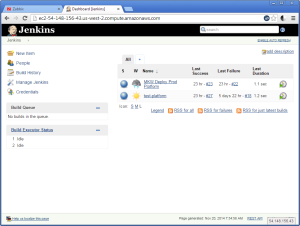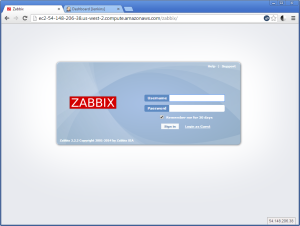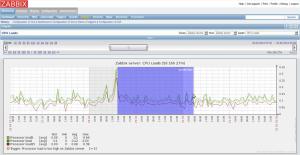I setup two new servers last night: Jenkins build server and Zabbix monitoring server.
Jenkins is an open source continuous integration tool. I will use Jenkins to build, test, and deploy all of my client and server software. Jenkins provides a nice web dashboard control with 1-click options for any custom job you create. Jenkins jobs can also be scheduled by triggers such Git repository commits.
Zabbix is an enterprise open source monitoring solution for networks and applications. You can use Zabbix to monitor and track the status of various network services, servers, and other network hardware. I will use Zabbix to monitor the server ecosystem internally and externally. Zabbix can be used to send email notifications when certain conditions arise, such as low memory on server, low disk space on server, or HTTP error responses. Zabbix provides neat graphs to help visualize data. For example, you can see a graph of CPU load on one of your servers:
These are two extremely powerful tools that will help me manage this project. It was several hours of tedious work, but it will be well worth it. I set up both of these servers on Amazon EC2 instances. I use Amazon Linux AMI instances in general, but I had to use a Ubuntu instance for Zabbix, because I couldn’t find a tutorial that worked for installing Zabbix on Amazon Linux/Red Hat/CentOS.




